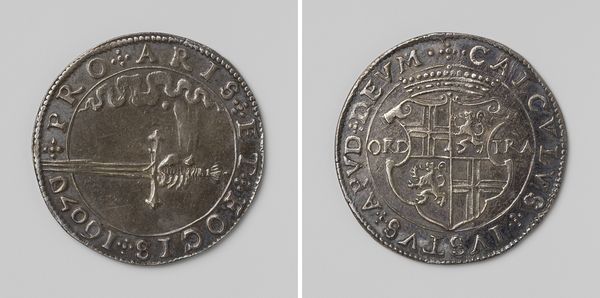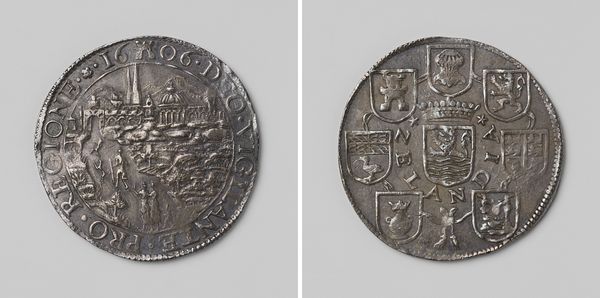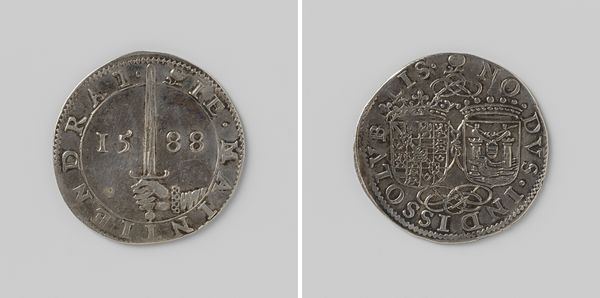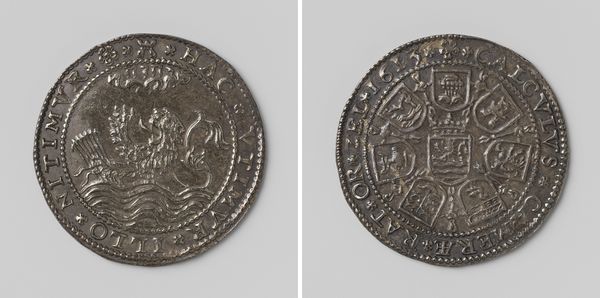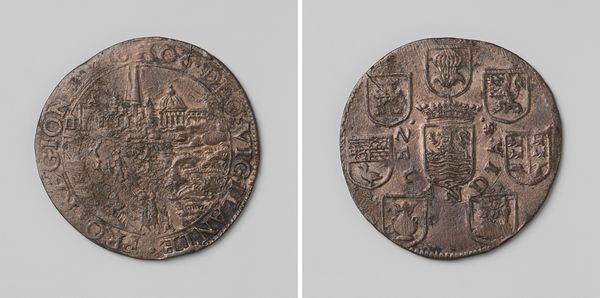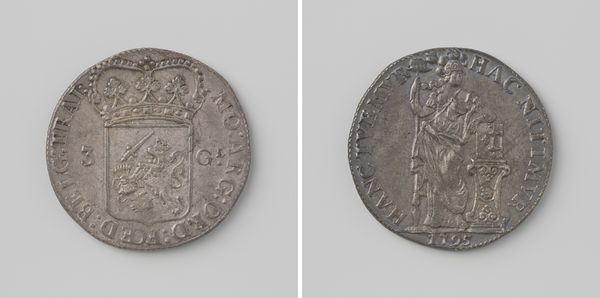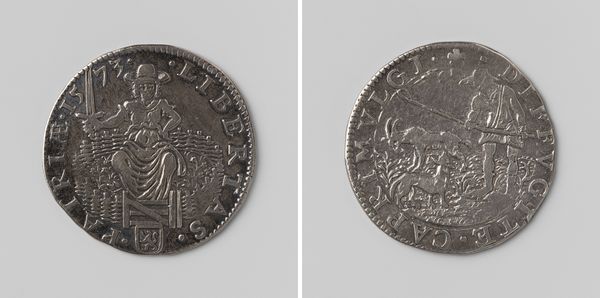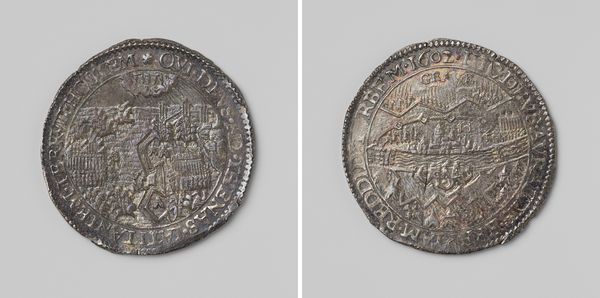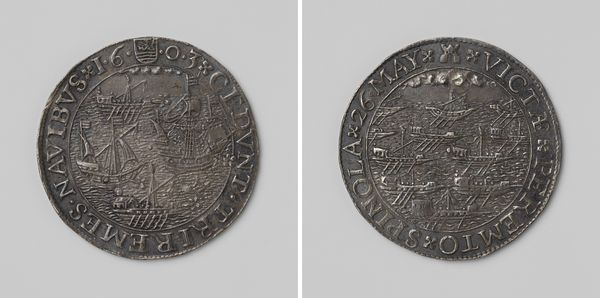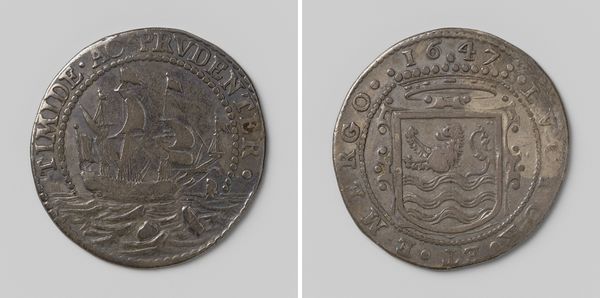
metal, sculpture, engraving
#
medieval
#
metal
#
sculpture
#
sculpture
#
cityscape
#
history-painting
#
engraving
Dimensions: diameter 3 cm, weight 6.87 gr
Copyright: Rijks Museum: Open Domain
Editor: Here we have "Overgave van Oostende en inname van Sluis," or "Surrender of Ostend and capture of Sluis," created in 1604. It looks like it's an engraving, possibly on metal. What strikes me immediately is the level of detail packed into such a small circular space. It's like holding history in your hand. What do you see in this piece? Curator: Indeed, it's remarkable how much historical narrative is contained within this medal. As an iconographer, I see beyond the literal depiction of cityscapes. These are not merely topographic records. Instead, they function as powerful symbols. Ostend and Sluis, positioned on either side, become symbolic totems representing contrasting fortunes. One side depicts the loss of Ostend which might speak to anxieties about territorial integrity, while the image on the other commemorates the triumph at Sluis, symbolizing resilience. Editor: So, these cityscapes aren't just places, but represent something bigger? Like a memory or feeling? Curator: Precisely! The engraver uses specific architectural details, the positioning of buildings, and the very lettering around the edges to evoke emotional and political responses. The inclusion of a coat of arms can act like a sigil that anchors this event within a particular family history. Consider the medium itself. Engraving into metal-- a permanent and enduring material -- reinforces the notion that these historical moments have lasting consequence and deep-seated significance. Why do you think the artist selected these scenes for portrayal? Editor: Well, knowing it’s from 1604, this probably captures a key moment in the Eighty Years’ War? To remind people of Dutch strength and power? It makes me think about how much visual messaging shaped identity back then. Curator: Excellent point. Medals such as these circulated beyond the elite. Each time someone held it, they would re-experience the depicted cultural memory of both struggle and victory. This created, affirmed, and shaped an emerging sense of "Dutch-ness." Do you now perceive a richer meaning conveyed by the artifact's symbols and details? Editor: Definitely! I see how seemingly straightforward depictions can be laden with political and cultural weight. I never realized just how effective it can be to use an image on an object as a tool of memory. Curator: It's fascinating, isn't it, how artifacts can compress complex emotions and historical narratives into symbols.
Comments
No comments
Be the first to comment and join the conversation on the ultimate creative platform.
